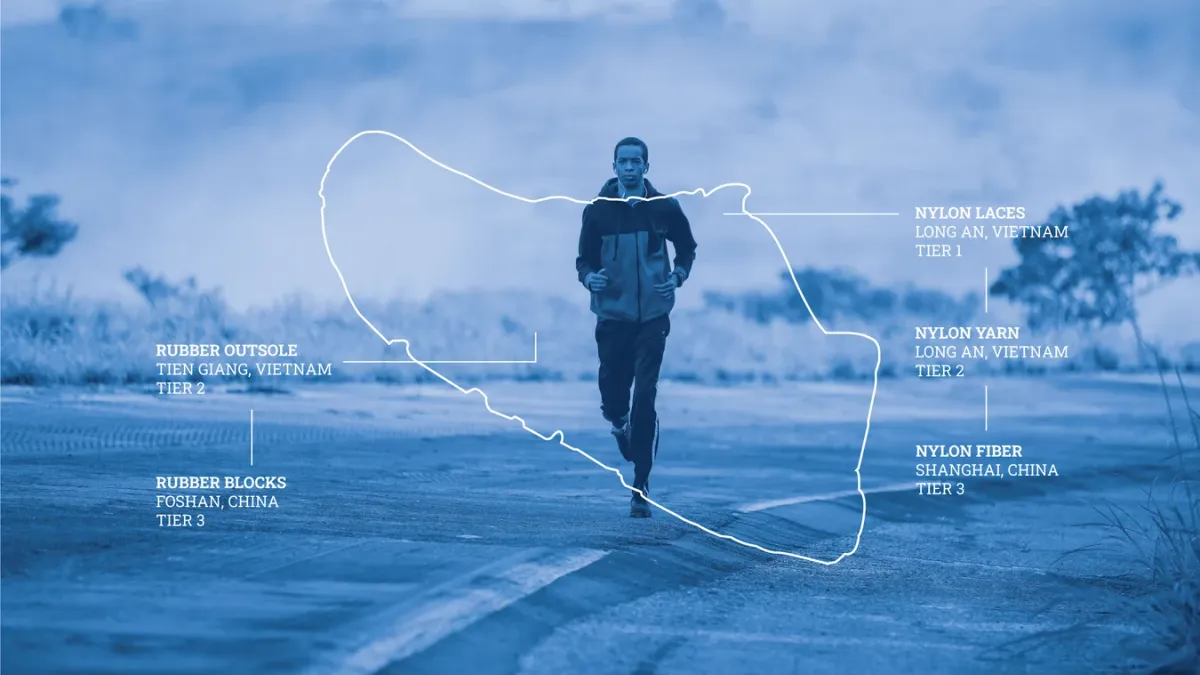Brooks Running is increasing visibility across its manufacturing supply chain as the company looks to take actionable steps towards its responsible sourcing targets.
The Seattle-based sports equipment retailer is using supply chain traceability and compliance platform TrusTrace to enable “us to identify and mitigate responsible sourcing and business continuity risks at a much deeper level of the supply chain and at a more frequent cadence,” Dave Kemp, director of corporate responsibility at Brooks Running, told Supply Chain Dive in an email.
TrusTrace is currently implemented at 100% of Brooks’ Tier 1 factories, as of 2022, with more than 130 Tier 2 and over 70 Tier 3 factories invited to the platform, according to a July 19 release from TrusTrace.
Looking ahead, Brooks Running will use the platform “to create visibility on a granular level, meaning we can collect information about our materials and factory partners at the individual product level, at scale,” Kemp said. Process efficiencies include automated requests and the collection of documentation to increase due diligence for customs compliance.
The success of the tool relies on support from factory partners, who are responsible for tracking their own operations, according to Kemp. The data collected provides an overview of Brooks’ supply chain, helping the company mitigate possible risks and increase due diligence compliance.
“Our responsible sourcing program has been engaging with our Tier 1 factory partners for over a decade, and more recently some Tier 2 material suppliers,” Kemp said. “However, we recognize social and environmental issues can extend deeper into the supply chain so it was important for us to first increase our visibility into these manufacturing partners deeper into the supply chain so we can better understand risk and where to focus our efforts.”
TrusTrace, which offers traceability and compliance data management for high volume footwear and textile value chains, provides data in real-time as materials and finished goods move through supply chains, according to the release.
“Through TrusTrace, we will be continuously discovering our supply chain with the support of our factory partners,” Kemp said. “We are hoping that the discovery of additional upstream partners will expand, and strengthen, our relationship with factories we have not worked closely with before.”
As retailers and textile companies buckle down on their sustainability targets, businesses have been leveraging technology to create greater visibility into their supply chains. In March, for instance, Serta Simmons bedding integrated digital supply chain software Blue Yonder into its existing planning system to optimize its manufacturing operations.














